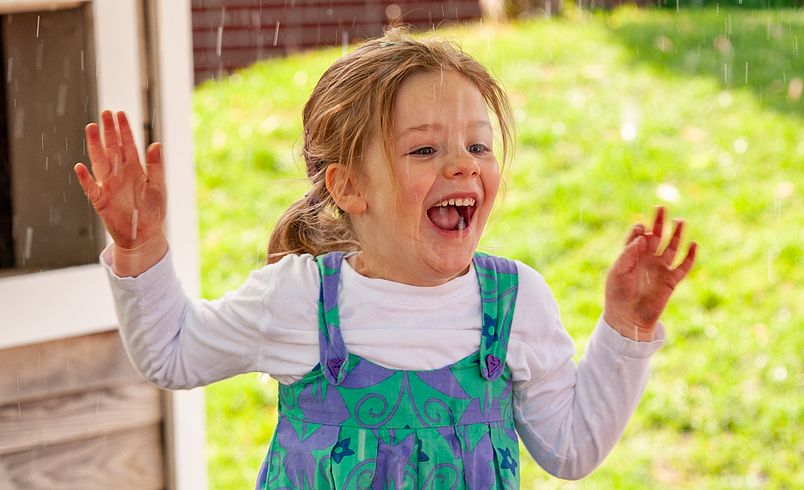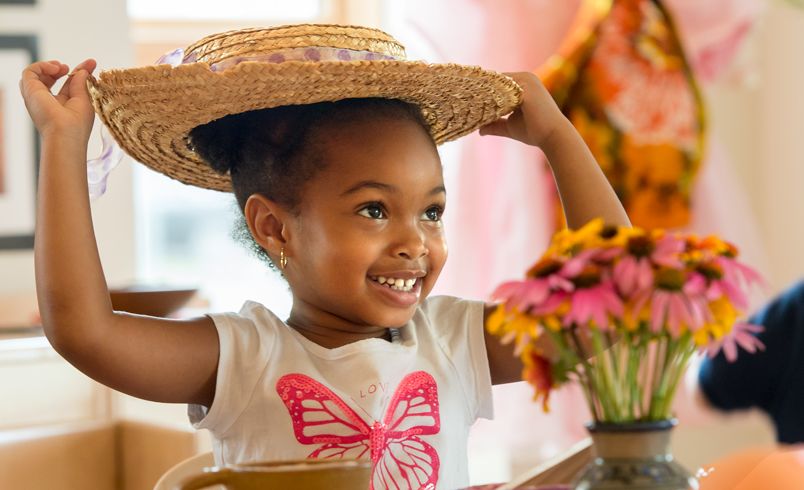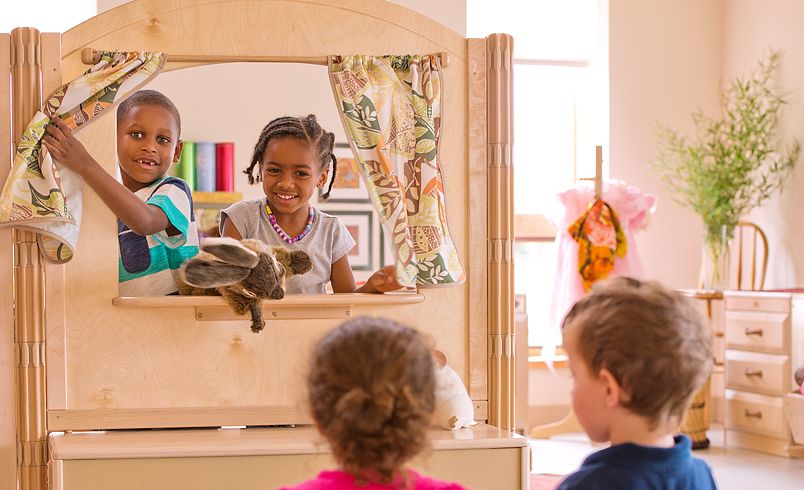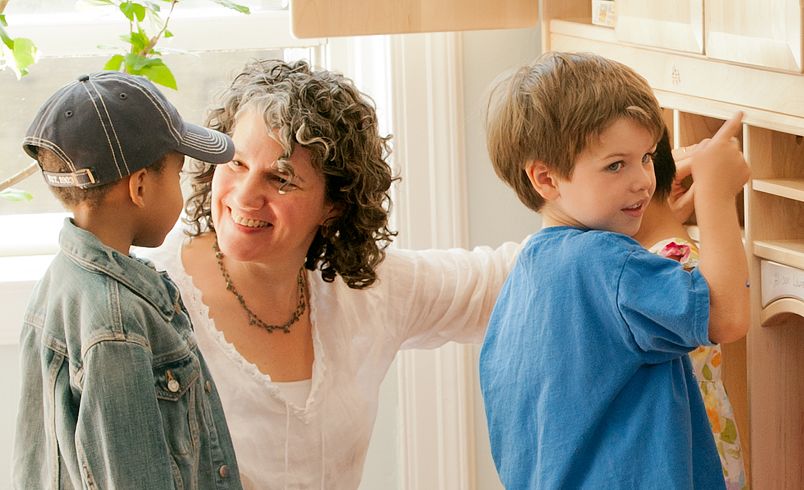Learned Optimism
A Critical Skill for Teaching and Learning
| January 2020Optimism. It’s a word we are all familiar with. Optimists make lemonade when life hands them lemons. Optimists focus on the positive, channeling their energy to focus on what they can control in their lives, while pessimists brace for the worst. When an optimistic teacher learns that the playground will be closed for two weeks for repairs, he plans for other ways to take the children outdoors to play and stretch their bodies. Another teacher might hear the same news and think, “Oh no. We will have to stay indoors for two weeks.”
For about 25 years, researchers have been studying the benefits of optimism for children and adults. Optimists tend to be healthier—both physically and emotionally, they live longer, and are more successful in school and sports. In addition, optimistic adults have more rewarding and successful careers. This all sounds great, but what if you are not optimistically inclined? The good news is that even if you weren’t born an optimist, optimism can be taught and learned. And once learned, optimism makes a permanent, positive difference in a person’s life.
The origins of learned optimism can be traced back to the work of Martin Seligman in the 1960s and 70s. What Seligman found is that people who are hopeful don’t become helpless in the face of adversity. Resilient people interpret events in ways that lead them to optimistic behaviors. In contrast, helpless people can interpret the same events in ways that lead them to pessimistic behaviors. The way we look at and respond to events is called our “explanatory style.” An explanatory style can be thought of as the stories people use to explain the cause of any event—good or bad. It is the prism through which we experience life, and leads us to feel hopeless (lacking control and a belief in change) or hopeful (able to solve problems and plan alternatives).
You are probably wondering where your explanatory style came from. Humans do have a genetic disposition to either pessimism or optimism, but it is not necessarily a permanent trait. About 75% of the traits associated with optimism versus pessimism are determined by where we grow up, our families, and our experiences. As with other kinds of development, forming an explanatory style is an individual process with its own time table and pace. The seeds of explanatory style germinate during the first few years of life. Explanatory style is also influenced by the adults who are important in children’s lives—their parents and teachers, in particular, by the feedback received from these people, and by how they deal with stressful or life-altering experiences, such as death of a family member.
As young children grow, develop, and experience the world, they begin to explain life to themselves. Children’s explanatory style remains fluid during preschool and kindergarten, which are times of ongoing development. As children mature and have more experiences, their explanatory style becomes more defined. By the time children are eight, their explanatory style is considered set. It will stay unchanged throughout the course of their lives unless there is an intentional intervention to help the child think optimistically or unless the child chooses to modify her explanatory style as an adult. This is why it is so important to incorporate learned optimism into early childhood education programs. We want to teach all children to think optimistically and to have the adults who support and care for them think optimistically as well.
Teaching optimism cannot be done in a vacuum. To help children change their explanatory styles, you have to first create a program that will support and reinforce this practice. Like most practices in early childhood classrooms, teaching young children how to think optimistically begins with creating a physical and emotional climate that supports learning this new skill, and the thinking skills related to optimism. To become optimistic thinkers, children will benefit from learning how to identify and regulate emotions, use executive functions, possess confidence and self-efficacy, be independent, take risks, persevere, solve problems, be empathic, and self-calm. These skills set the tone for optimistic thinking.
As an educator, it is neither appropriate nor helpful to implement a unit on optimistic thinking. Instead, you can help children gradually build their optimism by integrating activities in the curriculum that lend themselves to learning and using optimistic thinking. A key part of all these activities is engaging families so they can support children’s learning at home. The goal is for optimism to become a way of life.
Here are a few sample activities to help children learn optimistic thinking.
Optimistic Thinking Puppet Show
Taking on the role of a character lets children step out of themselves and see situations through a different lens. Children in the audience learn from seeing optimistic thinking in action.
Steps
1. Select three puppets or dolls to represent the following characters: a child the same age as the children in the classroom, a teacher, and a narrator.
2. Choose a participant to assume the role of the child character. He can give the puppet/doll a name, including his own. Review the basic premise for the show: What is the character upset about?
3. Assume the role of both the teacher and narrator, using the appropriate puppets/dolls. Although teachers typically do not play a leading role in puppet shows or skits, you need to serve as a model for this activity. You can act out how a teacher might help a child facing this challenge.
4. Following the presentation, ask the children these questions to help them understand the reasons why a problem is temporary and limited in scope. Encourage them to focus on its optimistic outcome.
Questions:
- What was the problem?
- How do you think the character felt?
- How did the teacher help the child talk through what was bothering him?
- How did the teacher guide the character to change his thinking about the problem?
- Why are things not always as bad as they seem?
Gratitude Box
In this activity, children learn to be aware of the positive things in their lives. This helps them understand that even though they face problems and obstacles, there is always something good to find and build upon. Martin Seligman calls these memories “good time nuggets.” They are especially useful for children who have communication disorders and may have difficulty recalling and retelling the positive events in their lives.
The activity is a form of reflection, which builds gratitude and is closely linked with optimism. By combining the two qualities in one activity, both are reinforced.
Steps
1. Make a Gratitude Box. A cardboard shoe box is about the right size. Cut a slit in the box top large enough for index cards to be slipped inside. Cover the box with plain paper.
2. Invite the children to decorate the box with crayons, paint, or by gluing on items such as shells, sparkles, and ribbon. Then place the box on a shelf or table within children’s reach.
3. Introduce the box to children during a group meeting. Define the word gratitude, and describe how the Gratitude Box will be used: Everyone will gather at the Gratitude Box each day at a set time, such as before going home. Explain that you and the children will think about three happy things that took place that day. Let children know that if they need help, you can refresh their memories. You will then help the children record the positive memories on separate index cards. Children can draw a picture, sign their names (or as much of their name as they know), or leave them anonymous. You will also write your own memories to put in the Gratitude Box. Talk while you write so children can hear what happy things happened to you that day. Demonstrate how they will put the completed memory cards into the Gratitude Box.
4. Remind children during the day to pay attention and be on the lookout for the good things that happen. At this age, children tend to be egocentric, so help them expand their thinking to include others, such as “Shandra was nice to Jan” or “Jenny’s mom made yummy bread with us.”
5. Open the Gratitude Box either daily or weekly at the morning meeting, depending on your schedule. Reach in, randomly take out one card at a time, and read it aloud. Read as many treasured memories as will hold the children’s interest—which may be only a few for younger children.
Helping children learn to think optimistically is a gradual process, but it is one of the greatest gifts you can give them. You can help children begin this process by encouraging them to dispute negative thinking and substitute pessimistic thoughts with flexible, optimistic ones. The practices you introduce, teach, and reinforce in early childhood can make the difference in children’s lives. The sooner one starts thinking optimistically, the easier it will be to reap the astounding breadth and depth of benefits that come from being an optimist.
To learn about your own optimism and ways to help young children become optimistic thinkers, read the book:
Making Lemonade: Teaching Young Children to Think Optimistically
Copyright 2019 by Laura J. Colker and Derry Koralek












